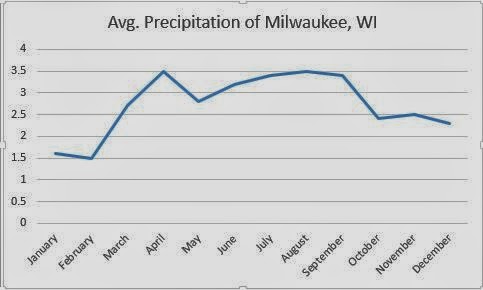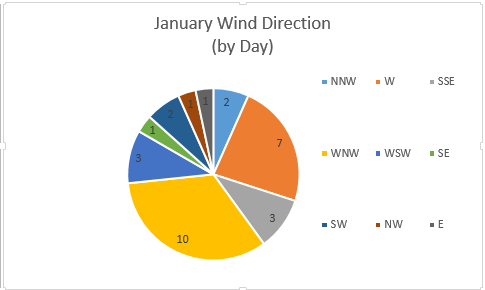Average Temperature and Precipitation for the cities of Madison and Milwaukee:
The Min and Max for Madison was January and February at 1.1, and 4.0 in August. For Milwaukee it was 1.5 in February and a max of 3.5 occuring in April, and August.
 |
The average temperatures for each city are nearly identical, although Madison's temperature peaks a little later in July than Milwaukee which peaks earlier in the month. The min and max temperatures for Milwaukee are 19 degrees in January and 70 in July. For Madison, the minimum reaches 16 degrees and 71 in July.
|
It is useful to compare this type of data between a few different places because for one it's fairly simple to do and second, it can help us learn a lot more about our region when it comes to average precipitation and average temperature. Several variable that differ between the locations are, distance in relation to a large lake, the typography of the surrounding areas, and the location pretaining to a certain latitude. I had never known before doing this research that basically every town in the contiguous U.S. can be researched with pertinent and helpful data at the ready for each.
 |
| Temperatures were frigid this past January, and people were starting to make rumblings at how unusual the temperature was. |
 |
| February actually saw the average temperature drop over the course of the month. Even more people jumped on the bandwagon for the coldest winter early in the month. By the end of February, news outlets were presenting nightly updates on how usually cold this winter was. |
 |
| March finally saw us reach above freezing temperatures but it wasn't until the end of the month that we saw consecutive days above the freezing point. |
 |
It finally seems like we're back on track with two straight months of warm weather averages rising daily. Even if it only seems like early spring in late April, there is a range of 20-40 degree difference between average daily temperatures compared to January.
|



















No comments:
Post a Comment